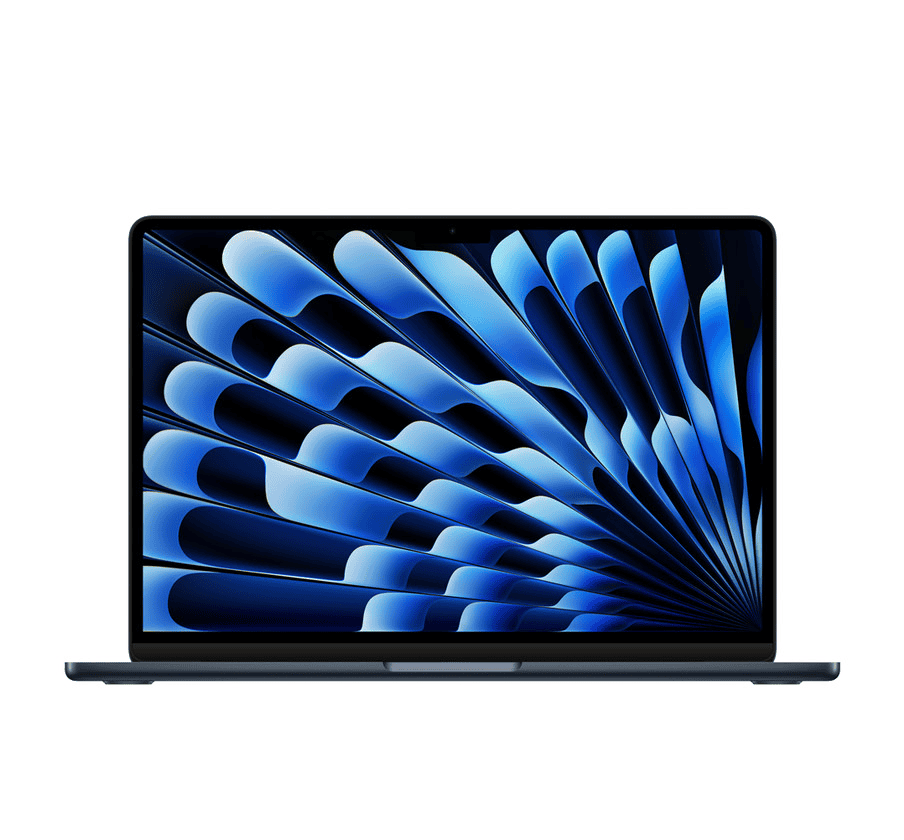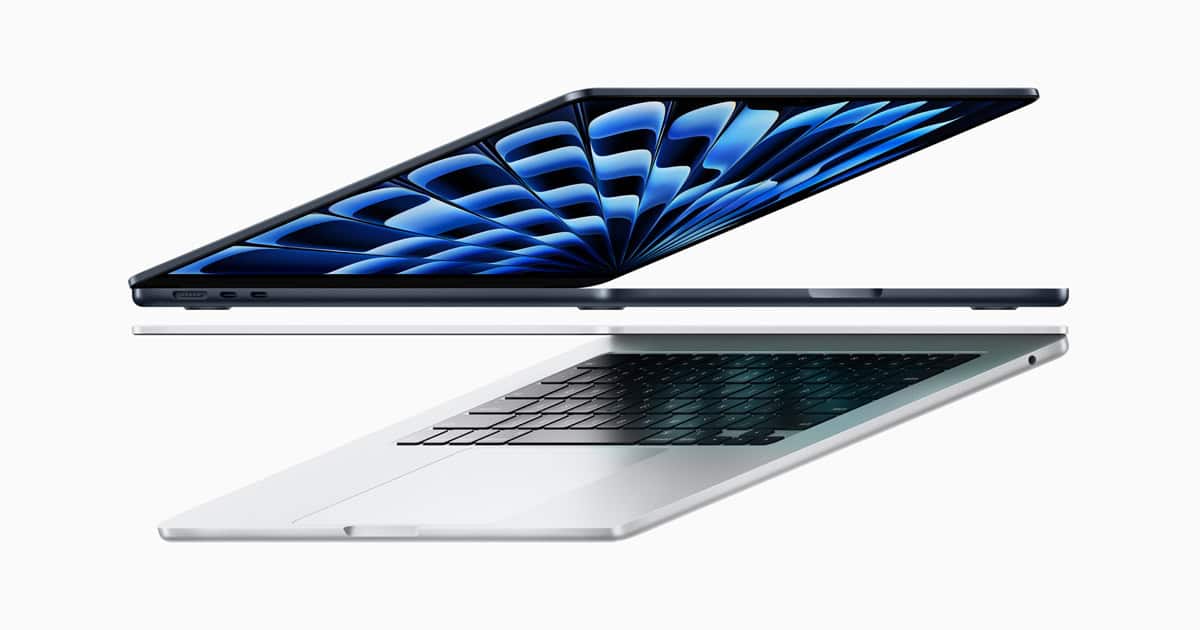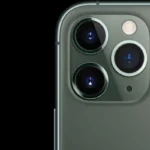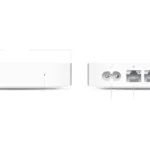The M3 MacBook Air and MacBook Pro models offer impressive performance, but their base models come with only 8GB of RAM. While Apple claims that macOS functions perfectly well with just 8GB, this has raised concerns about whether these devices can compete with Windows PCs, which typically have 16GB of RAM or more. Apple asserts that their 8GB MacBooks perform similarly to 16GB Windows laptops, highlighting the efficiency of their memory system.
The M3 Mac utilizes advanced memory management techniques to minimize delays and enhance performance. This makes it a good choice for users seeking a powerful computer at a relatively lower price.On the other hand, many 16GB Windows PCs are available at more affordable prices and can handle most tasks comfortably. Pricing is also an important factor to consider. The base model of the M3 MacBook Pro with 8GB of RAM starts at $1,599, while numerous 16GB Windows PCs are offered at lower price points. Ultimately, determining which laptop is better depends on balancing performance needs with budget considerations.

Mac vs. PC Showdown: 8GB vs. 16GB
Memory Management
The M3 chip’s unified memory architecture allows for more efficient memory usage compared to traditional Windows PCs. This means that even with 8GB of RAM, the M3 Macbook can handle tasks that might require more memory on a Windows machine.
Real-World Performance
In real-world tests, the M3 Macbook with 8GB of RAM holds its own against Windows laptops with 16GB of RAM in many scenarios. For everyday tasks like web browsing, document editing, and light photo editing, the difference is often negligible.
Demanding Workloads
However, for more demanding workloads such as video editing, 3D rendering, or running multiple memory-intensive applications simultaneously, the 16GB Windows PC may have an edge. The additional RAM allows for smoother multitasking and faster processing of large files.
The Verdict
While 8GB of RAM in the M3 Macbook might seem limiting compared to 16GB on a Windows PC, it’s important to consider Apple’s efficient memory management. For most users, the 8GB model will be more than sufficient. However, if you regularly engage in demanding tasks, upgrading to a 16GB model or opting for a Windows machine might be a wiser choice.
Performance Comparison
| Task | M3 Macbook (8GB) | Windows PC (16GB) |
|---|---|---|
| Web browsing | Similar performance | Similar performance |
| Document editing | Similar performance | Similar performance |
| Photo editing | Similar performance | Similar performance |
| Video editing | Slower | Faster |
| 3D rendering | Slower | Faster |
| Multitasking (heavy) | Slower | Faster |
The debate between the 8GB M3 Macbook and a 16GB Windows PC rages on. While the M3’s efficiency narrows the gap, the decision ultimately hinges on your specific needs and workload.
Delving Deeper into the 8GB vs. 16GB Debate: A Closer Look at Memory Management
macOS Memory Management: A Unified Approach
Apple’s M3 chip utilizes a unified memory architecture, which means the CPU and GPU share the same pool of RAM. This differs from the traditional approach in Windows PCs, where the CPU and GPU have separate memory allocations. Unified memory offers several advantages:
- Increased Efficiency: By sharing memory, the M3 chip can dynamically allocate resources based on the task at hand. If a task requires more graphics processing, the GPU can access a larger portion of the available RAM.
- Reduced Latency: Data doesn’t need to be copied between separate memory pools, resulting in faster processing and smoother performance.
- Improved Power Efficiency: Unified memory can lead to lower power consumption, contributing to longer battery life.
Memory Compression and Swap
In addition to unified memory, macOS employs memory compression techniques. When RAM is full, macOS compresses inactive memory to free up space for active tasks. This allows the system to handle more applications and data than the physical RAM capacity might suggest.
macOS also utilizes swap memory, but it does so differently than Windows. Instead of relying heavily on a dedicated swap file on the SSD, macOS uses a more dynamic approach, swapping smaller chunks of memory as needed. This can help minimize the performance impact of swapping.
Visualizing Performance: Benchmarks and Examples
While benchmarks provide a general idea of performance, real-world examples can be even more insightful. Consider these scenarios:
- Video Editing: In a video editing workflow, the M3 MacBook with 8GB of RAM might experience some slowdown when working with very large projects or applying complex effects. A 16GB Windows PC might handle these tasks more smoothly due to the extra memory available.
- Multitasking: When juggling multiple applications, such as a web browser with dozens of tabs, a word processor, and a photo editor, the 8GB MacBook might start to show signs of strain. A 16GB Windows PC might provide a more responsive experience in this scenario.
Tailoring Advice for Different Users
- Students: For most students, the 8GB M3 MacBook will be more than sufficient for note-taking, research, and light creative work. However, if you plan on doing more demanding tasks like video editing or running complex simulations, a 16GB Windows PC might be a better choice.
- Content Creators: If your workflow involves heavy video editing, 3D rendering, or graphic design, a 16GB Windows PC with a powerful dedicated GPU will likely provide better performance. However, the M3 MacBook with 8GB can still handle many content creation tasks effectively, especially with its efficient memory management.
- Gamers: While the M3 MacBook’s integrated GPU has shown impressive performance in some games, a 16GB Windows PC with a dedicated graphics card will generally deliver a better gaming experience, especially for demanding titles.
Hardware Specs: A Closer Look
| Feature | M3 MacBook (8GB) | Windows PC (16GB) |
|---|---|---|
| CPU | Apple M3 (unified memory) | Intel Core i7/i9 or AMD Ryzen 7/9 (dedicated memory) |
| GPU | Integrated in M3 chip | Dedicated NVIDIA or AMD GPU |
| Storage | SSD (typically 256GB or 512GB) | SSD (various capacities) |
| Display | Retina display (various sizes) | Various display types and resolutions |
| Battery Life | Typically longer due to efficiency | Varies depending on configuration |
Key Takeaways
- The 8GB M3 MacBook offers advanced memory management.
- 16GB Windows PCs can be more affordable and provide sufficient memory.
- Choosing between them involves balancing performance and price.
Technical Specifications and Performance Analysis
A detailed look at both the 8GB M3 Mac and 16GB Windows PC reveals noticeable differences in hardware and performance, including memory systems and benchmarks.
Hardware Overview
The M3 MacBook Pro is powered by the latest Apple Silicon Chip, integrating both CPU and GPU in one chip. The MacBook Pro comes in various configurations, but the base model typically has 8GB of unified memory. The CPU in the M3 chip boasts multiple cores, providing significant multitasking capabilities.
In contrast, a typical high-end Windows PC with 16GB RAM will have separate CPU and GPU components. This separation means the RAM is not as seamlessly integrated. However, 16GB provides ample memory for most tasks, from browsing to content creation.
Memory and Storage Capabilities
Apple’s unified memory architecture means that the 8GB of RAM in the M3 Mac is shared between the CPU and GPU. This efficient sharing can boost performance for certain tasks. Additionally, memory compression features further enhance effectiveness, making better use of the available memory.
In Windows PCs, the traditional dedicated memory layout for the CPU and GPU means that even with 16GB of RAM, there can be limits on how resources are allocated. Windows-based systems generally rely more on SSD-based swap files when RAM is exhausted. Storage options vary, but both systems typically use high-speed SSDs for quick data access.
Performance Benchmarks and Real-World Use
Benchmarks indicate that the M3 MacBook Pro performs well despite having only 8GB of unified memory. It often competes with or exceeds Windows PCs with double the RAM in tasks like video editing and content creation. The integrated Neural Engine in the M3 chip accelerates AI-related tasks significantly.
In real-world use, the 8GB M3 MacBook Pro runs multiple applications smoothly, including heavy ones like Photoshop. Tests highlight that the CPU and GPU collaboration boosts performance in graphics-intensive tasks and gaming, though not always matching systems with dedicated high-end GPUs.
Meanwhile, a Windows PC with 16GB RAM typically handles multiple browser tabs, office applications, and some gaming without noticeable lag. Applications such as video editing might still see benefits from increased system RAM, especially with larger files or multiple processes running simultaneously.
Frequently Asked Questions
This section addresses common questions regarding the performance and usage of an 8GB M3 MacBook compared to a 16GB Windows PC.
What are the performance implications of 8GB unified memory on an M3 MacBook compared to a 16GB Windows PC?
An 8GB M3 MacBook is promoted as equivalent to a 16GB Windows PC for many regular tasks. This is due to the efficiency of unified memory in managing tasks.
How does the memory management in macOS with 8GB on an M3 chip compare to 16GB on a Windows PC in terms of multitasking and professional applications?
macOS uses unified memory to optimize usage across applications. It allows the M3 MacBook to handle multitasking efficiently. Windows PCs might need more RAM to handle the same level of multitasking due to different memory management techniques.
Can the M3 MacBook with 8GB RAM efficiently run professional-grade software that is typically used on a 16GB Windows PC?
Yes, the M3 MacBook with 8GB RAM can run professional software. Tasks such as video editing and graphic design are manageable. Performance may vary for extremely heavy tasks compared to a 16GB Windows PC.
What are the benefits and limitations of the 8GB unified memory on the M3 MacBook for creative professionals?
Benefits include streamlined memory use and strong multitasking. Limitations may arise with highly resource-intensive tasks where more memory could ensure smoother performance.
How does the battery life and overall efficiency of an 8GB M3 MacBook compare to a 16GB Windows PC under heavy workloads?
The M3 MacBook generally offers better battery efficiency under heavy use due to optimized hardware and software integration. Battery life on a 16GB Windows PC can be shorter under similar workloads.
What are the potential drawbacks of running Windows through virtualization on an 8GB M3 MacBook Pro compared to using a native 16GB Windows PC?
Running Windows on an 8GB M3 MacBook via virtualization can tax the system, leading to slower performance for intensive applications. A native 16GB Windows PC often handles virtualization better due to additional memory resources.
Can I upgrade the RAM in an M3 MacBook after purchase?
No, the RAM in M3 MacBooks is soldered to the motherboard and cannot be upgraded.
How does virtualization performance compare between the two systems?
A 16GB Windows PC will generally handle virtualization more smoothly due to the additional memory resources. Virtualizing Windows on an 8GB M3 MacBook can be more demanding on the system.
What are the long-term implications of having 8GB vs. 16GB of RAM?
As software becomes more demanding, having 16GB of RAM might provide more headroom for future-proofing your system. However, macOS’s efficient memory management could help extend the lifespan of an 8GB M3 MacBook.







